In our imaginations, the open canoe may open onto visions of the Northern Forests of Canada - but “Trad” boating is as British as Lancashire Hotpot or Yorkshire Pudding!
CHOOSING A "TRAD" CANOE
Advocates of British “Trad” may talk of a canoe which does everything, and of One Boat To Rule Them All, but at the heart of their enterprise we find compromise…
As a rule, we don't find one "trad" boat for everything we want to do… we develop the skills to do everything we want to do in our chosen "trad" boat!
In practice, Trad mostly means managing with a craft which is way less than ideal for whatever we might be doing at the time… but which will still be just about ok for doing way-different things at other times.
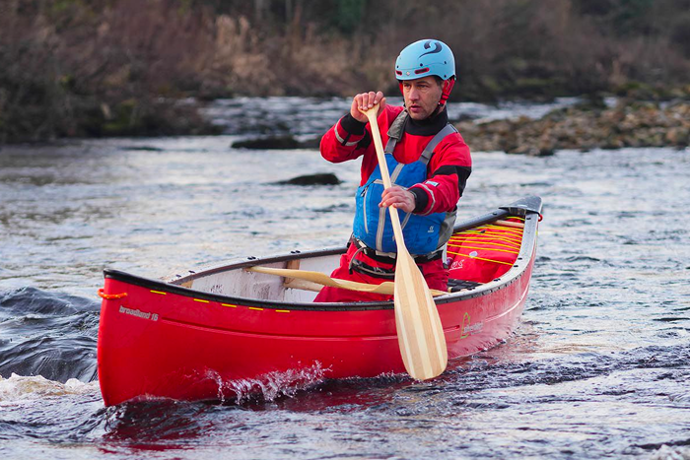
Does that mean we should give up on our "ultimate" boat? Not at all - but it could be the one we'll grow to love as we get out doing the boating that matters to us… which might mean Trad for gentle touring, Trad for whitewater, Trad for open water or Trad around the water.
In a way, Maine Guides Garrett and Alexandra Conover, of Beyond the Paddle fame, embody the spirit of British “Trad” boating - but their work centred on nursing traditional wood and canvas canoes down waterways in Maine. In other environments, other choices might make more sense!
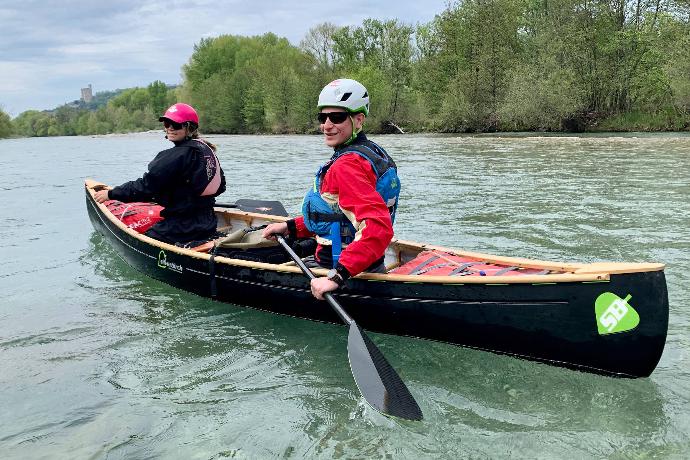
GOING 'TRAD' FOR GENTLE TOURING
If we know what we're doing we can have a lot of fun with pretty much any canoe on a lively river. If we're going to enjoy ourselves on slow flowing rivers and on lakes, especially on longer journeys, we might want to be more picky.
A river-oriented “trad” canoe on open water can be a recipe for battles and for slog, but a mile-eating cruiser can become hard work on a narrow, winding and overgrown stream.
What do we seek? A canoe which we find comfortable for hour after hour? A canoe which is easily driven, so we stay fresher for longer? A canoe which doesn’t catch the wind, so we’re not having to work harder than we’d like?
As a rule, which we find a “trad” canoe for touring easy to trim level, with fine entry lines and enough length to move easily at our preferred pace and as little waterline width as practicable. As little canoe as possible catching the wind can also make a difference, as can comfort from seated and a bit of tumblehome.
If we see the spirit of “trad” as problem solving we might embrace the challenges posed by gentle touring in almost any open canoe… but if touring is our main thing, this should probably be reflected in our "trad" canoe.
CHOOSING "TRAD" FOR WHITEWATER
Does our choice of “trad” canoe matter for rivers? Not always! We might enjoy our boating in any "Trad" canoe on forgiving rivers where the flow will do much of the work and where getting things wrong is just part of the fun.
In practice, rivers are many trad-boater's first and most enduring love, and at the very least, a more manoeuvrable boat can make the difference between frustration and exhilaration.
If our we want to push our limits on rivers, we might embrace a canoe which is way more forgiving on white water and just accept the downsides elsewhere!
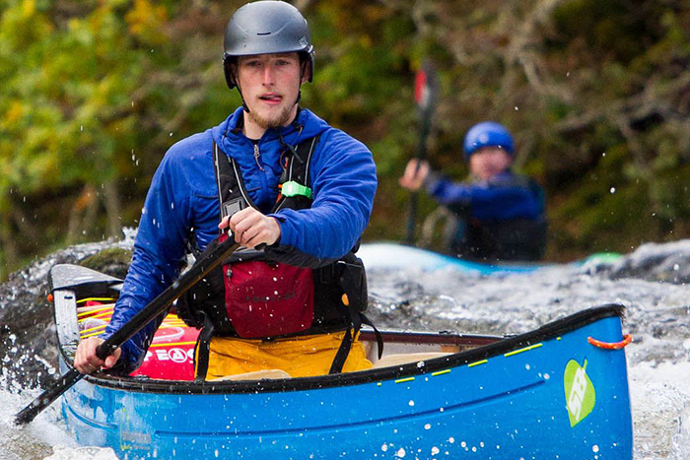
Great - but does that mean a boat that's great to handle on big white water (quick to accelerate, nimble) or a boat built like a tank, designed to take hard hits and to resist wrapping, or like to be able to get away with a questionable line even on comparatively easy white water?
Whatever our preferences might be, our priorities mean compromises. That might mean straighter-running canoes are "out" or we’re going to be attracted to “high line” variants… but one thing is certain: what's "right" for one white-water canoeist is not necessarily "right" for others, even where everyone's on the same rivers!
Some will certainly embrace the challenge of doing everything (including rivers) in a lowline, straight running canoe that cuts through the breeze and is a joy to use solo on open water. That might be anything from a lightweight and delicate canoe to a monster which needs a trolley to launch or recover. Either might be a challenge on a river... but if that's your idea of a fun challenge then why not?
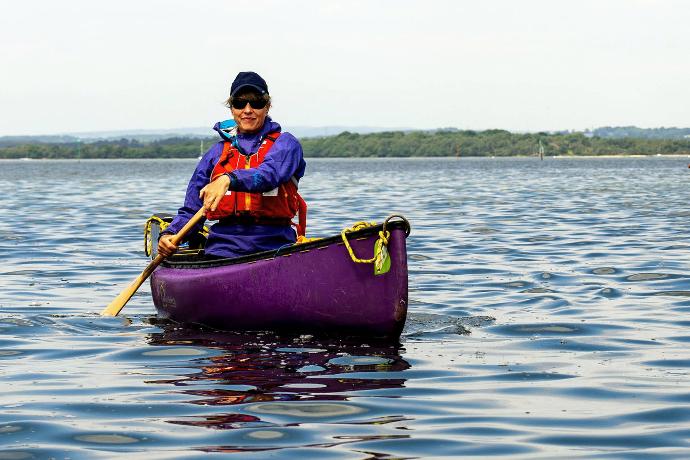
GOING "TRAD" ON EXPOSED WATER
What works best for us in a canoe for clipping along on a lake in perfect conditions is not necessarily what we want if we're into what the enthusiast end of "Trad" canoeing might see as "advanced" open water.
A simple 2.5 square metre sail set well forward might push us into waves way harder than any paddling effort will manage. If that’s our thing, do we need a canoe with more flare in the bow? Or more freeboard?
What matters when we build a raft from our canoes and stick up a big rig for powering downwind in a stiff breeze? Certainly not efficiency or finesse - or weight, or stability, or even manoeuvrability. For hard downwind rafted sailing we might prefer a highline white water canoe to a "touring" canoe!
Open water considerations can put pressure on our solo-vs-tandem compromises, especially where we’re going to be covering any distance in wind and waves.
We really don’t want to be overloaded (and few traditional tandem canoes of any description do well when loaded beyond the 5” waterline) but we also want the hull engaged (minimum: 2” waterline) and we know under-laden canoes can be a pig in a breeze!
GOING "TRAD" AROUND THE WATER
For many of us, the romance of journeying and outdoor living is at the heart of British "Trad" - and that's reflected in classic associations with everything from tarps and axes to fireboxes and Kelly Kettles - but what's that mean for us?
What does "journeying" mean for us? Lots of packs, barrels, portaging, overnighting and so on? Maybe carrying a lot of stuff? Or in practice, are we might mostly going to end up afloat in “boat-paddle-go” mode?
Whatever our approach, manhandling our canoes on land is likely to become a familiar part of our “Trad” boating. We can make that more agreeable with a lighter weight construction, but as we then going to add several kilos with everything from painters, swimtails and swimlines to endloops, lacing and airbags ? We need to factor these in when we choose our canoe!
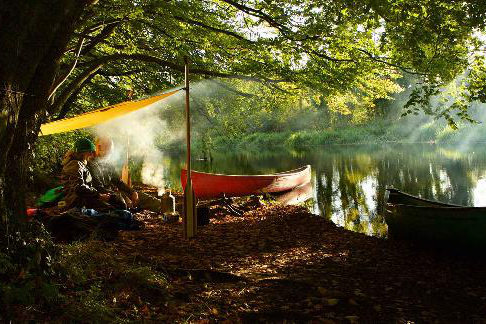
If we’re going to carry shedloads of stuff we’re going to have to confront the Lashed, Leashed or Loose debate. That means our boat will need to work for whatever solutions we choose, which has implications for Outfitting Our Canoe.
Do we want a canoe which is convenient for large packs, or if we’re going to use a trolley on our portages do we just need space to pack that in alongside everything else?


Choosing a "Trad" Canoe: One Canoe to Rule Them All